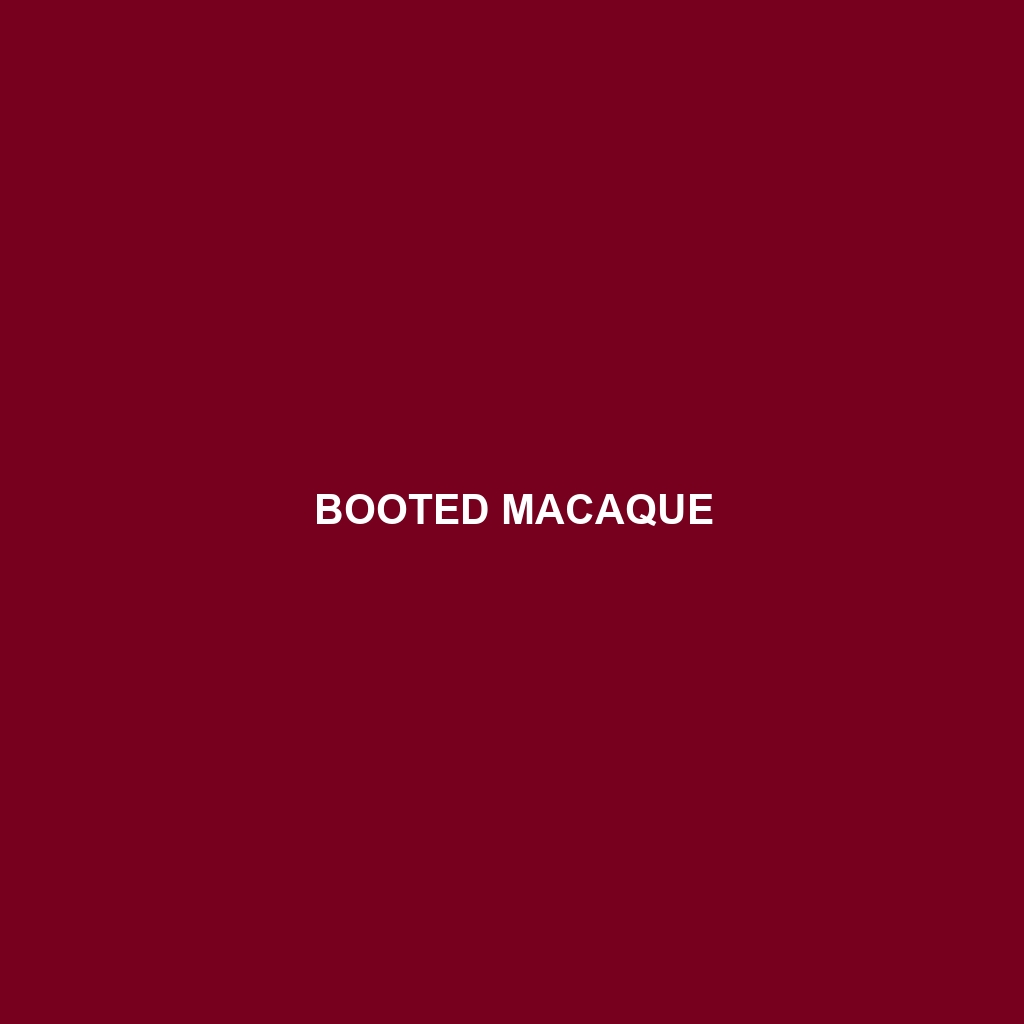Booted Macaque: An In-Depth Profile
The Booted Macaque (Macaca ochreata), also known as the Sulawesi Booted Macaque, is a distinctive primate species endemic to the island of Sulawesi in Indonesia. Known for their unique physical features and complex social behaviors, these macaques play a significant role in their ecosystem. Despite their ecological importance, they face numerous threats that challenge their survival.
Physical Characteristics
Size:
Adult males typically weigh between 7-10 kg (15-22 lbs) and measure approximately 50-60 cm (20-24 inches) in body length, excluding the tail.
Adult females are generally smaller, weighing around 5-7 kg (11-15 lbs) and measuring 45-55 cm (18-22 inches) in body length.
Coloration:
The Booted Macaque has a dark brown to black coat with a more grayish or whitish underbelly.
Their face is usually hairless, with a pink to dark brown complexion, and they have prominent cheek whiskers.
Special Features:
The species gets its name from the “boots” of fur around their lower legs, which are a lighter color compared to the rest of their body.
Their tails are relatively short and are not prehensile, serving more as a balance aid rather than for grasping.
Behaviors
Social Interactions:
Booted Macaques live in complex social groups known as troops, which can range from 20 to 50 individuals.
These troops are matriarchal, with females often staying in the group they were born into while males typically leave upon reaching maturity.
Grooming is a common social activity that reinforces bonds and hierarchies within the group.
Feeding Habits:
They are primarily frugivorous, with fruits making up the bulk of their diet. However, they are also known to consume leaves, flowers, seeds, and occasionally insects.
Foraging is usually a group activity, and the macaques exhibit a high degree of cooperation and sharing among troop members.
Ecological Roles:
As seed dispersers, Booted Macaques play a crucial role in maintaining the health and diversity of their forest habitats.
Through their foraging behavior, they help to control insect populations and contribute to the cycling of nutrients within the ecosystem.
Habitats and Adaptations
Habitats:
These macaques are typically found in tropical and subtropical forests, ranging from lowland rainforests to montane regions up to 2000 meters above sea level.
They prefer densely forested areas with abundant fruit trees, which provide both food and shelter.
Adaptations:
Their strong, agile limbs and opposable thumbs allow them to adeptly navigate the forest canopy.
Their social structures and communication skills help them efficiently coordinate activities such as foraging and predator avoidance.
Conservation Status
The Booted Macaque is currently listed as Vulnerable on the IUCN Red List due to habitat loss, hunting, and human encroachment.
Conservation efforts are underway, including habitat protection and the establishment of wildlife reserves to safeguard their populations.
Fun Facts
Booted Macaques are known for their expressive faces and intricate vocalizations, which they use to communicate within their groups.
They exhibit a fascinating behavior known as “lip-smacking,” a social gesture that often precedes grooming and is a sign of friendship and trust.
Unlike some other macaque species, Booted Macaques rarely come into conflict with humans, making them less prone to negative interactions and retaliatory harm.
By understanding and appreciating the unique attributes and ecological importance of the Booted Macaque, we can better support conservation efforts to ensure their continued survival in the wild.
